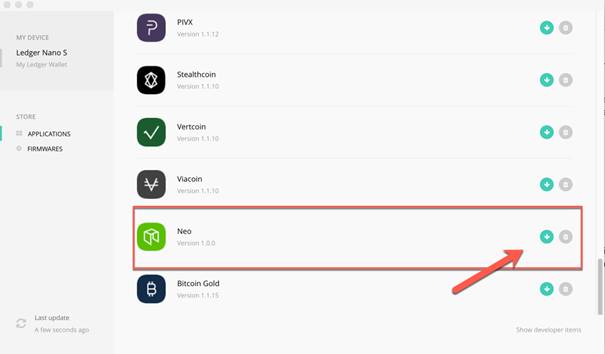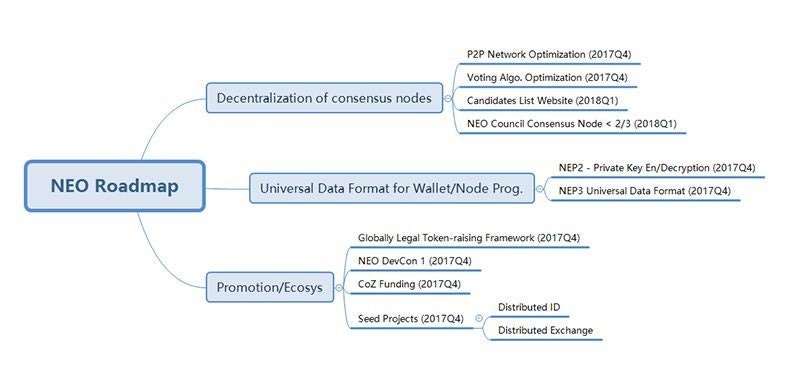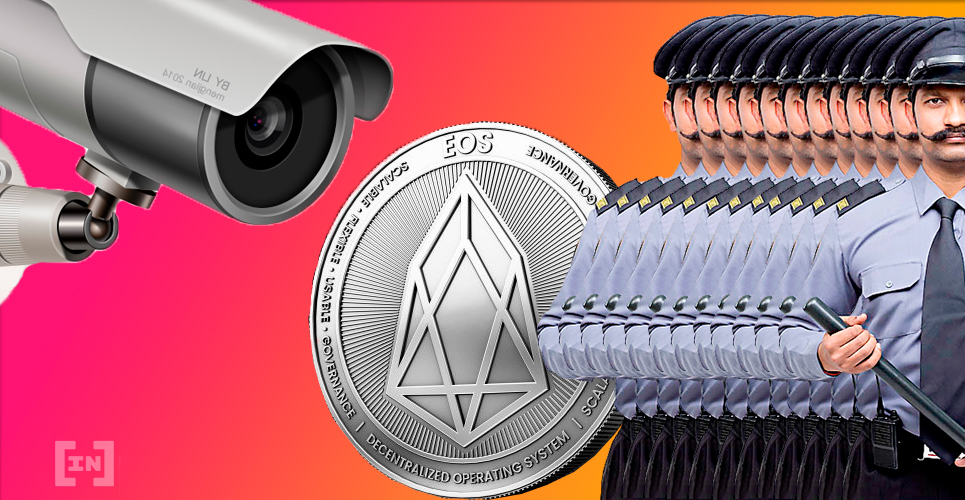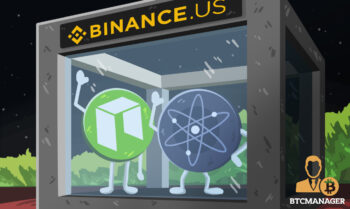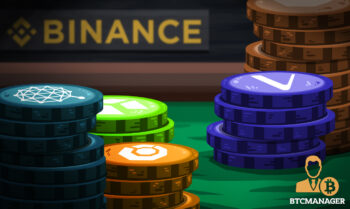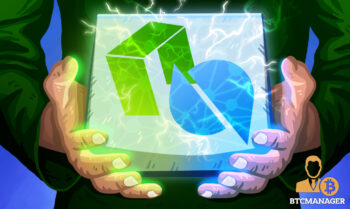
2020-1-23 14:33 |
Commonly referred to as “the Ethereum of China”, NEO turned heads in 2017 after closing out the year with a price increase of over 500,000%. As incredible as that is, prices in cryptocurrency bounce around more than a birthday party at Trampoline World. What matters most is the underlying technology. How exactly does NEO work? Is the hype legitimate? Let’s find out.
In this beginner’s guide to NEO, we’ll cover:
What is NEO? NEO’s Smart Economy Explained How NEO Works Governing the Neo Network Buying Neo The Best NEO Wallets Conclusion What is NEO?NEO is an open-source blockchain launched through a two-part ICO in August 2016. Formerly known as Antshares, NEO is a product of Shanghai-based blockchain research and development company Onchain. The faces of Onchain are CEO Da Hongfei and CTO Erik Zhang.
NEO bills itself as a distributed network for the “smart economy”. This smart economy is defined by the unity of digital assets, digital identity, and smart contracts. Here’s a quick explanation of NEO’s vision in their own words:
“NEO is a non-profit community-based blockchain project that utilizes blockchain technology and digital identity to digitize assets, to automate the management of digital assets using smart contracts, and to realize a “smart economy” with a distributed network.”
The similarities to Ethereum are clear. Both NEO and Ethereum offer generalized blockchains and developer tools that allow for new developers to build on-top of their platform, instead of being required to build their own blockchain.
Where these platforms differ is in their intended use cases. While Ethereum intends to build “a more globally accessible, more free and more trustworthy internet”, NEO aims to combine blockchain technology with existing infrastructure, under government regulation, to create a smart economy based on asset digitization.
NEO’s Smart Economy ExplainedFor the sake of clarity, let’s break that down one step further:
Digital Assets + Digital Identity + Smart Contracts = Smart Economy
Digital assets are programmable assets that exist in the form of electronic data and can be broken down into two sub-categories: voucher assets and credit assets.
Voucher assets are simply digital copies of agreements or licenses. Contracts, stock certificates, and real estate licenses all fit into this bucket of established agreements added to the blockchain for the sake of convenience and transparency.
Credit assets refer to the tokenization of physical goods. You take a physical asset you can prove ownership of, like a car, a painting, or gold, and issue a digital token on the blockchain which represents that physical asset.
Digital identity serves to prove the connection between digital and physical assets. Assets registered through a validated digital identity can be protected by law. More on this later.
Smart contracts are effectively ‘if this, then that’ operations that run when specified conditions are met. A vending machine is a simple smart contract: if you insert $2 and select Coke, the machine will release a Coke. NEO’s smart contracts can be coded with mainstream programming languages such as C#, Java, and Python, providing increased exposure to a wide range of developers.
Unlike Ethereum, where users pay fees for their corresponding network usage, NEO’s network fees are meant to be collected from the individuals and companies who wish to provide a service on the NEO blockchain.
How NEO Works: Under the HoodAs mentioned above, NEO utilizes blockchain technology to build a smart economy using digital assets, digital identities, and smart contracts on a distributed network. In this section we will walk through all of the parts that makeup NEO and describe how the network functions.
The NEO platform has two native tokens; NEO and GAS:
NEO: The Right to VoteThe NEO token represents the right to manage the network. Holders are given the privilege to vote on network changes. There are 100 million total NEO tokens. The minimum unit is 1 NEO and tokens cannot be subdivided. 1 NEO token is equal to 1 vote on the NEO network.
The entire supply of NEO was created with the genesis block. Half of the tokens were distributed during the ICO, while the other half was retained by the NEO Council. The plans for these tokens, according to NEO’s whitepaper, are as follows:
10 million tokens (10% of total supply) will be used to motivate NEO developers and members of the NEO Council. 10 million tokens (10% of total supply) will be used to motivate developers in the NEO ecosystem. 15 million tokens (15% total) will be used to cross-invest in other blockchain projects, which are owned by the NEO Council and are only used for NEO projects. 15 million tokens (15%) will be retained as contingency.The paper claims that the annual use of NEO in principle shall not exceed 15 million tokens.
GAS: Fueling the NEO NetworkThe GAS token represents the right to use the NEO network. The NEO network charges GAS as a service fee for using the network, as well as a spam prevention method. Unlike the NEO token, GAS can be subdivided. The minimum unit of GAS is 0.00000001.
GAS is generated with each new block added to the NEO blockchain. The network started with zero total GAS, generating 8 GAS per block. The amount of GAS generated per block will be reduced by 1 GAS every year to coincide with the passing of every 2 million blocks.
Holders of NEO tokens, so long as they’re in possession of their private keys, earn GAS at a constant rate based on the quantity of NEO tokens owned. According to GAS calculator NeoToGas.com, 100 NEO is enough to earn you a passive income of $1.8/day, based on market prices at the time this article was written.
These rewards come from companies paying services fees (in GAS) to use the NEO network. Because the supply of GAS is finite (100 million), these rewards will eventually stop once GAS is fully distributed.
Governing the NEO NetworkThere are two types of nodes within the NEO blockchain: ordinary nodes and consensus nodes. Ordinary nodes use the network to transfer and exchange, while consensus nodes, referred to as bookkeepers in early versions of the NEO whitepaper, are responsible for providing accounting services and maintaining the ledger.
NEO does not use conventional proof-of-work (PoW) or proof-of-stake (PoS) consensus mechanisms. So who decides which block goes next? This is decided by the Byzantine Fault Tolerance algorithm (dBFT).
Nodes don’t compete to create the next block on the NEO network because there are no block rewards to be paid out. Consensus nodes are left to validate transactions on the network solely because they want the network to succeed.
Here’s what the NEO council has to say regarding consensus and economic incentives:
We believe that achieving decentralization by economic incentives for nodes has fundamental problems, and leads to network improvements being stalled and prevented if they would result in less financial gain for the nodes. Users and developers are forced into an environment where transaction fees are kept high by design, significantly limiting their ability to build profitable decentralized applications.
There are currently zero transaction fees on the NEO network. While it’s possible for consensus nodes to begin charging transaction fees, taking a cut for themselves in the process, the NEO network is incentivized to prevent that from happening:
Consensus nodes become consensus nodes when they are voted into power by NEO holders. NEO holders passively earn GAS from service fees; which come from companies digitizing assets, running smart contracts, and using the NEO network. The higher the transaction fees, the less likely new companies will use the network, and the less GAS NEO holders will earn. Consensus nodes that charge transaction fees are likely to be voted out by NEO holders for this reason.It should be noted that although the voting mechanism has been implemented on NEO’s blockchain, voting on consensus nodes is not currently possible. More on that below.
Consensus Nodes: What They Do, Why, and Who’s Behind ThemNew blocks are added to the NEO blockchain when consensus nodes are able to agree on the validity of transactions within the proposed block. As long as more than two thirds of the nodes are in agreement, the network moves forward. If there is a disagreement, then a different consensus node will propose the block it was working on instead.
Without block rewards there is no economic incentive for bad actors to break the rules, but there are still plenty of things that can go wrong. Doublespends, errors in contract code, and incorrect data formatting are all issues that consensus nodes check for before approving a new block.
There are currently just 7 active consensus nodes on the main NEO network, and all of them are controlled by the NEO team. It’s safe to say that in its current state the NEO network is heavily centralized.
This isn’t something NEO is trying to hide. In a blog post titled “Response to baseless FUD” Malcom Lerider, Senior R&D Manager for NEO, had this to say in response to a comparison between a decentralized validation system and NEO’s dBFT approach:
NEO is not a currency. Moreover, what you are explaining is a slow network with intention to avoid regulation. Not sure if we failed to communicate it clearly enough, but NEO Smart Economy is a fast network that operates alongside regulation.
According to the whitepaper, the NEO network is capable of a throughput of up to 1,000 transactions per second (TPS) in the real world, with a potential of 10,000 TPS in theory. This is a drastic improvement on the 15 TPS Ethereum is capable of.
NEO plans to iterate towards a more decentralized network by first forming a strong base of good actors. To be considered a good actor candidates must demonstrate they are capable of achieving outstanding uptime and performance as a consensus node, but only after passing a “rigorous identification process” and staking 1,000 GAS. These consensus nodes will be held accountable, and legally liable for their actions.
Once each of the 7 initial consensus nodes are ran by 7 unique entities, the NEO voting process will be begin, allowing for more nodes to be added to the network.
How to Buy NEOBoth tokens native to the NEO network, NEO and GAS, can be purchased through cryptocurrency exchanges such as Binance and Bittrex. Unless you’re building a smart contract on the NEO network, you’ll probably want to purchase NEO instead of GAS. It’s worth noting, Binance pays out GAS distributions to users who hold NEO on their exchange unlike most other exchanges.
You can find our step-by-step guide on how to buy NEO here.
Exchange Trading Fees Withdrawal Limits Review VisitBinance
0.1% 2 BTC equivalent / 24 hours w/ no verification100 BTC equivalent / 24 hours w/ "Level 2" Verifcation Binance Review
Visit Binance
Bittrex
0.25% .04 BTC equivalent / 24 hours w/ "Basic" verification100 BTC equivalent / 24 hours w/ "Enhanced" Verification Bittrex Review
Visit Bittrex
jQuery(document).ready(function($) { $("#table-145").stacktable({ myClass:"stacktable small-only" }); }); Best NEO WalletsYou don’t actually own your crypto assets unless you are in possession of your private keys. As a general rule, you should always move the majority of your holdings off exchanges and into a secure wallet. Exchanges have been hacked before, and they will likely be hacked again. Move your NEO tokens to one of the private wallets listed below to take security into your own hands.
Here are 4 popular NEO wallets worth checking out:
NEO GUI wallet: Developed by the NEO team, the GUI wallet is your standard bread and butter desktop wallet. The NEO GUI wallet offers all the basic functionality you need to manage your NEO tokens on your desktop.
O3 Mobile Wallet: The O3 mobile wallet is the most popular mobile wallet available for NEO holders. Developed by a third party, the O3 wallet was first released in Q4 2017 and has been endorsed by the NEO team.
NEON Wallet: The NEON wallet is developed by City of Zion, an independent development group formed to support the NEO ecosystem. It is a light wallet, meaning users aren’t required to download the entire blockchain to use it. Like the O3 mobile wallet, the NEON wallet has been endorsed by the NEO team (see neo.org/download) and remains open source.
Ledger Nano S: The Ledger Nano S is one of the 3 most popular multi-currency hardware wallets and the only one of these that supports NEO. Hardware wallets are widely considered to be the safest way for most cryptocurrency investors to store their coins. The downside is, since these are physical devices, they cost money. The Nano S retails for ~$97. You can learn more in our Ledger Nano S Review and User Guide.
Which wallet you choose will likely come down to personal preference.
ConclusionNEO is unique in the sense that it’s not exactly a cryptocurrency, nor is it meant to be used as a cryptocurrency. When you purchase NEO tokens you are essentially buying a share of the NEO network, and all of its GAS fees. Ownership of these shares entitles you to vote on protocol changes (like fee structure) and nominate consensus nodes, all while passively generating GAS.
NEO seeks to empower our current economy with their smart economy platform, not replace it. The smart economy will digitize real world assets, track their ownership using verifiable identities on the blockchain, and enable efficiency gains through smart contracts. Although NEO’s approach to seek and embrace regulation is a 180 degree turn from the approach of many decentralized cryptocurrencies, achieving the smart economy would be no small feat.
The post What is NEO Cryptocurrency? | The Ultimate Beginner’s Guide appeared first on UNHASHED.
origin »Global Cryptocurrency (GCC) íà Currencies.ru
|
|
